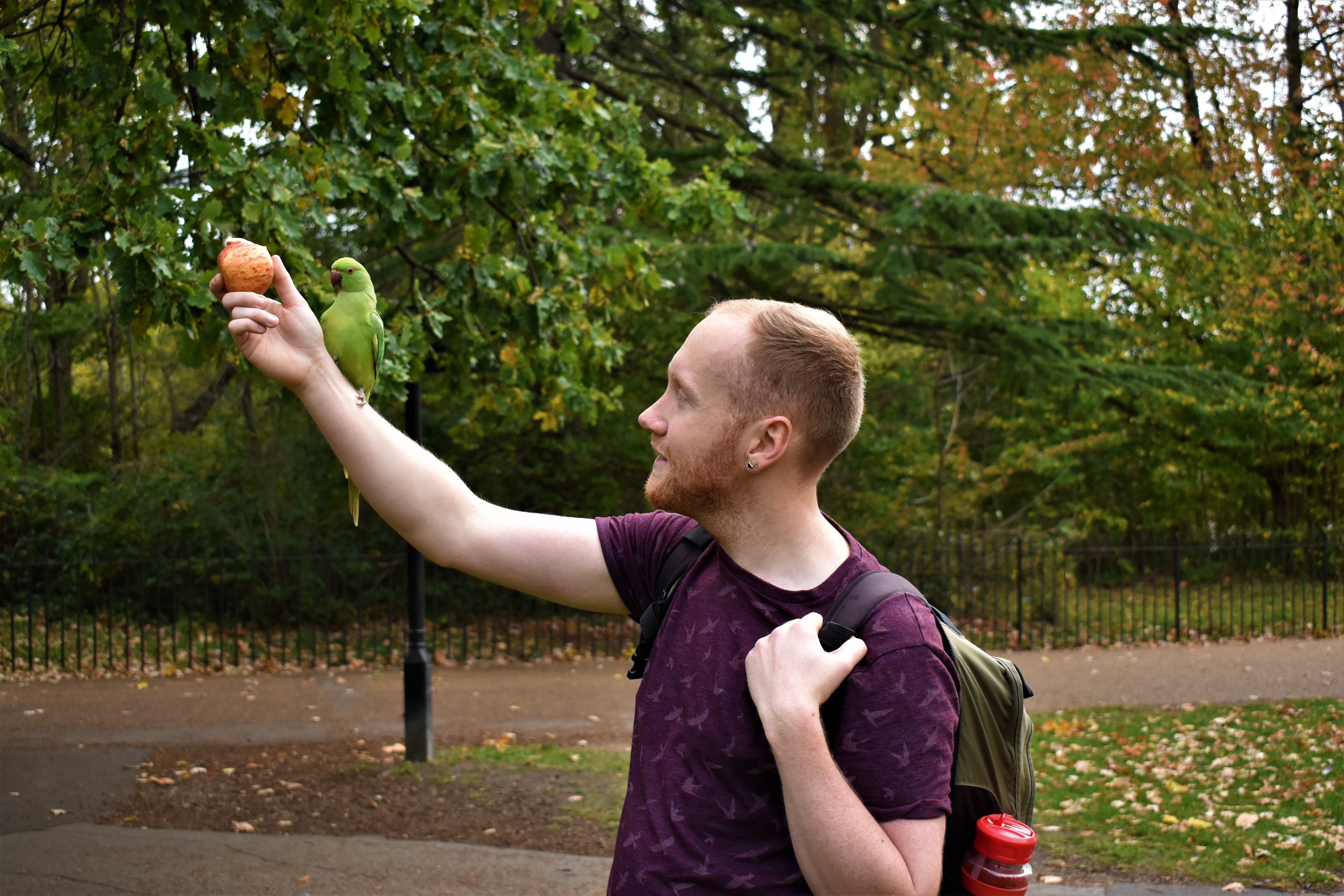Hailing from the North East of England, to me, a visit to London is much like a visit to a dystopian future. One where geographical boundaries blur and species which naturally should never have encountered one another, stand cheek by jowl in an odd assemblage of the tropical and tenacious. From squirrels, birds and fish to the very trees that make up the backbone of the city’s parks, wildlife watching in London is a queer old affair.
Killing some time between professional commitments upon a recent trip ‘down south’, it would have been rude of me not to visit at least a few of London’s many sprawling parks. And I did: calling first at St. James’s to enjoy its otherworldly assortment of wildfowl – both captive and wild. Admiring the numerous Egyptian geese, hamstringing passers-by for a free meal in the company of feral Bar-headed Geese – originally from Asia – and the odd free-flying Black Swan. Whether or not the latter were part of the parks extensive collection remains open to speculation. Coupled with the odd Mandarin, these helped set an altogether tropical tone to our stay in the capital.
Egyptian Geese
The collections at St. James’s were interesting too, of course. Paramount to any zoo and providing a great opportunity to brush up on my exotic waterfowl ID – with Ruddy Shelduck, Hooded Merganser, Red-breasted Goose, Fulvous Whistling Duck and Ross’s Goose present to name but a few. Not to mention the world-famous Pelicans doing their utmost to delight the amassed crowds. I confess, I was quite taken by them.
Famous pelicans, with bonus Ruddy Shelduck and Red-breasted Geese
Departing St. James’s, we headed for Hyde Park – brandishing an apple so to [hopefully] gain a closer look at one of the capitals most prolific alien residents: Ring-necked Parakeets. We were not disappointed, and after almost an hour of hearing the characteristic, piercing shrieks of this species from high in the canopy of London Plane – another non-native species – soon found ourselves covered head-to-toe in lurid green birds. The characterful parrots just as confiding as the countless pictures posted to social media had suggested: adorning head and arm alike as they squabbled for prime, fruit-stealing position. With some even going so far as to deliver a short, sharp bite when not immediately pandered to – impatient Southerners.
Up-close and personal with London’s parakeets
While some find themselves conflicted regarding Grey Squirrels [we saw an ungodly amount of these in London too] I, like many others, find myself torn on Ring-necked Parakeets. On one hand, they are potentially damaging invasives: killing bats, extirpating native birds from nest holes and plundering food crops. They are noisy, brazen, disruptive and at the base of things, should not be here. On the other hand, they are rather beautiful, and for many in the city, provide a much-needed link to the natural world. One they are familiar with. Honestly, I could not help but feel charmed by the birds and, with their permanent status in Britain all but assured, see no harm in celebrating them for what they are: adaptive and resilient colonists. Much like ourselves.
Parakeets, waterfowl and invasive squirrels aside, I would like to say that I also noted an abundance of native species in London. I didn’t. By large, most of the species seen and enjoyed were colonists – each impressive in their own way. Something which, if little else, serves to help me understand the difficulties faced when we conservationists openly and fiercely discuss the need to control, limit and destroy non-native species. For some, species such as this – the parakeets, grey squirrels and Egyptian Geese of this world – are all the wildlife they know. Little wonder then that some choose to defend them so vigorously. I might not agree, but I do understand.











